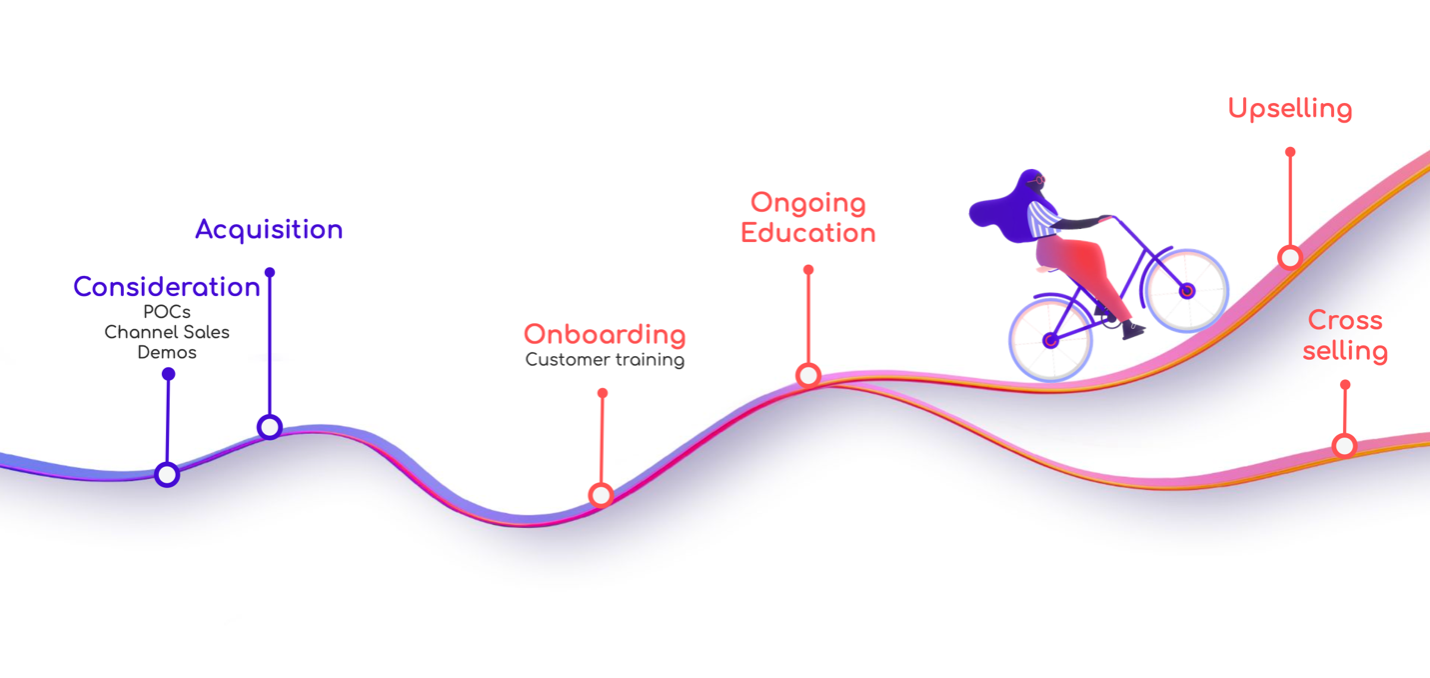Lack of User Adoption Drives Most Software Implementation Failures
For decades, more than half of technology projects have failed due to one key factor—the lack of adoption by key stakeholders. Even when compared with the complexity of a technical implementation, why is adoption still the number one customer challenge? The human factor requires different learning modalities via interactive content; this drives successful customer onboarding, ongoing education, retention advocacy, and cross-selling.
The following are four factors that drive adoption failure:
- Disparate presales and onboarding solutions. Demos, proof of concepts (POCs), and training classes are often on multiple different platforms. Without a single pane of glass, users face massive complexity with a cornucopia of technologies.
- High cost of low-quality content creation. Learning and development staffing issues have led to content outsourcing or low-quality content. Student expectations are unmet, leading to poor understanding and product application. The content created for POCs, channel sales, and demos often are not reused later in the customer lifecycle.
- Static content turns off users and fails to create stickiness. In most cases these sessions are conducted via slideware. Slideware—static presentations such as PowerPoint, Keynote, and so on—more than often fails to provide the fidelity required to give users the knowledge and experience they need to improve adoption of software.
- Customer loyalty wanes with low adoption. Customers who fail to achieve immediate business value with the software most likely will not increase adoption or consider future sales with a vendor.
Software Vendors Strive to Deliver Seamless and Interactive Experiences to Users Across the Customer Journey
For most software vendors, the customer journey begins with consideration, acquisition, onboarding, ongoing education, and retention advocacy (e.g., up-selling and cross-selling). When customers fail to use the software licenses purchased, they fail to gain value from the software. For on-premises customers, this harms future account values. In the software-as-a-service (SaaS) world, this leads to lack of renewal. And, according to a recent industry survey, aligning training metrics with business goals is a top challenge faced by software trainers.
As a result, leading software vendors view their overall customer journey as a continuum of experiences and engagement (see Figure 1). This means they must be relentlessly focused on creating effective customer training throughout the entire lifecycle. And, research cites customer satisfaction as a top training goal—paramount for creating a seamless customer journey.
Figure 1. The Customer Journey Is Rife With Adoption Barriers

Source: CloudShare
Virtual Experience Labs Improve Adoption and Drive Implementation Success
The virtual experience lab is an emerging category of software that addresses costly implementation and low user adoption. What makes virtual experience labs your new secret weapon? They combine virtual IT labs, digital training, sales adoption, user adoption, and a client implementation platform into one offering. The result is a consistent product experience for acquisition, client onboarding, customer training, and ongoing education.
Software vendors benefit from faster creation time, lower production costs, and engaging interactive sales demo POCs. Customers achieve business acceleration with engaging onboarding and training throughout the customer lifecycle via one seamless platform.
Three Ways to Get Started Today
To get started on the virtual experience lab journey, Constellation recommends the following:
- Identify the main adoption barriers in your customer journey: In which stage(s) of the lifecycle do customers fail to meet their goal (e.g., 30% of customers don’t adopt your product)?
- Quantify the gap between your desired KPIs for success and existing metrics: What is the delta between planned and actual results (e.g., you are 20% away from meeting product adoption goals)?
- Seek out a holistic virtual experience lab platform: A true virtual experience lab platform must support all stages of the customer journey by offering virtual IT labs, digital training, sales adoption, user adoption, and client implementation.
Your New Secret Weapon
Virtual experience labs streamline the customer journey and maximize business KPIs. They are your secret weapon for improving sales and winning customer loyalty. Creating a seamless customer journey benefits both customers and the business. For software companies, this leads to training and sales programs aligned with business metrics, improved customer retention, stickiness, and greater lifetime value (LTV) per customer.


0 Commentaires